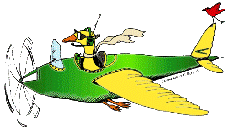Bird Strike Committee Proceedings
Date of this Version
October 2002
Document Type
Article
Abstract
Land-use restrictions in the vicinity of airports are increasingly employed as a means to reduce bird strikes on aircraft. Yet, in the absence of controlled studies, the link between land usage and bird strikes is largely anecdotal. In seeking a connection between bird strikes and land use, the records of reported bird strikes from the years 1990-2001 were examined for 28 airports in down-state Illinois. For each airport it was noted whether land use within 6 miles of the airports included large bodies of water or wetlands, wildlife sanctuaries, golf courses, landfills, shopping venues with food concessions, or croplands. Because most bird strikes reportedly occur in the course of aircraft takeoffs and ascent or aircraft descent and landing, aircraft operations (defined as takeoffs or landings) are taken to represent opportunities for bird strikes such as might be linked to surrounding land uses. This allows the creation of a comparative statistic for the number of aircraft operations per reported bird strike. Because bird strike reports are voluntary, no attempt is made to formulate a predictive statistic. However, it is noted that the largely rural down-state Illinois airports report bird strikes (as a function of aircraft operations) far less frequently than is indicated by a comparative national statistic. The bird strike reporting frequency among the studied down-state Illinois airports is noticeably greater at the more heavily trafficked airports. It is found that land uses in the vicinity of the 28 airports that were examined do not represent an obvious linkage to bird strikes reported at those airports.


